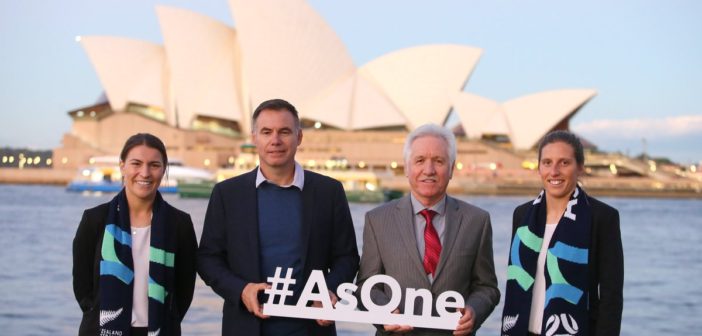As the crow flies, there are over 3,000 miles (or 4,880km-ish) separating Dunedin, New Zealand and Perth, Australia. Which, as the crow flies, is Marrakesh to Moscow plus another 300miles.
This is a strange hill to take residence on, but as women’s football continues to grow – not overlooking the expanded World Cup tournament that will require more stadia and accommodation – it has a duty to do so in the most environmentally conscious way possible.
When we talk about women’s football, we often argue about why it needs to be compared to men’s football and why it doesn’t have to make the same mistakes as the men’s game. It can forge its own path, learning from the errors of the men’s game and looking to be a better sport. A more inclusive sport, a more tolerant sport, one that doesn’t start by gobbling up every bit of dirty revenue possible.
So, as Australia and New Zealand get underway with planning to host the 2023 World Cup, making plenty of history in the process, we have to think about the environmental impact.
South to North to South and North again
Whilst the 2015 World Cup in Canada (that stretched 2,650 miles – again, as the crow flies – from Moncton to Vancouver) saw most of the group games clustered in one place, the 2019 World Cup in France as more stretched. Indeed, as most English fans will tell you, the Lionesses’ group schedule had them traveling from Nice to Le Havre and back to Nice again. Meaning the team started the tournament on the blisteringly hot French Riviera (Nice, the southernmost venue for the tournament) to the considerably cooler La Havre before going back to the south coast.
Whilst having a well-enough served airport, Nice is a little more tucked away than other cities along the coast and travel by train can lead to a detour through Marseilles to get back to the North. Over 500miles from Le Havre, there was little rhyme or reason as to why the match (in this instance, England vs Argentina) wasn’t played in one of the more southern cities (Montpellier and Grenoble the more obvious options).
This was, of course, not a problem that was unique to England, the hosts had a match in Nice sandwiched between ties in Paris and Rennes, Cameroon bookended a match in Valenciennes with clashes in Montpellier.
Although the tournament was northern-heavy with more host cities comfortably north of the Swiss border, most nations found themselves boomeranging from north to south at some point during the group stage. Which didn’t just mean the team and all the support staff schlepping from one end of France to the other, but often the healthy number of fans who travelled to France, as well as all the media. Planes, trains, automobiles all spitting out excess pollution. The carbon footprint of a major tournament will always stamp down into the soft earth with gusto but, arguably, the tread didn’t have to be quite so deep last summer.
Sprawling
Admittedly, in Canada, the group matches were double-headers and there were still anomalies, like Edmonton-based Group A playing their last two matches in Winnipeg and, unfathomably, Montreal.
When it comes to the 2023 World Cup and Australia and New Zealand’s winning combined bid, there is the acceptance that the expanded tournament boasting more teams and matches than ever before, will require more. More pitches, more hotels, more flights, more everything. But when looking at the maps of the 13 proposed venues, spread out across the length of New Zealand and largely confined to Australia’s South Eastern quarter, it’s easy to imagine the emissions going up and up.
The hope is all involved will be sensible about the distribution of games and teams won’t find themselves bouncing from one country to the other during the group stage, but rather be able to base themselves around one area. Even moving forward into the knock-out rounds, there is a logical path that could be taken en route to the final to keep the tournament’s carbon footprint as small as possible.
As already stated it’s a strange hill to climb atop, especially when there’s a veritable mountain range of issues regarding football at the present but is nevertheless an important one. Even if we are still three years out from the start of the tournament.
Follow us on Twitter @ProstInt
![Prost International [PINT]](https://prostinternational.com/wp-content/uploads/2021/08/PINTtFontLogoRoboto1536x78.jpg)




